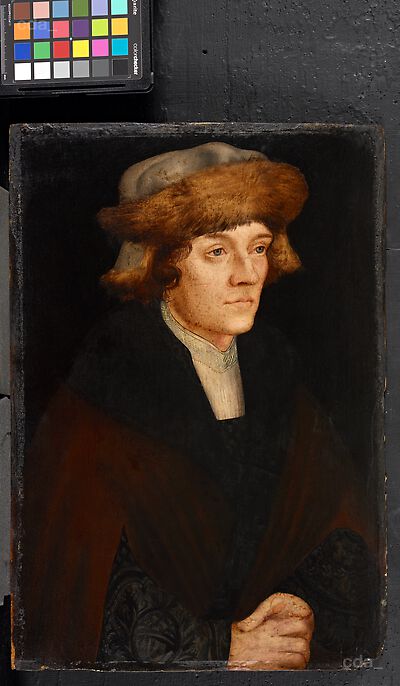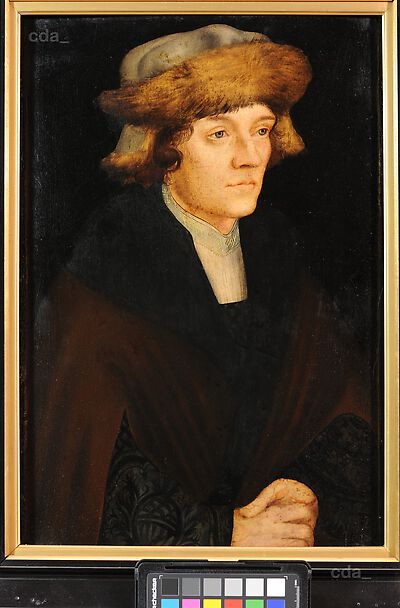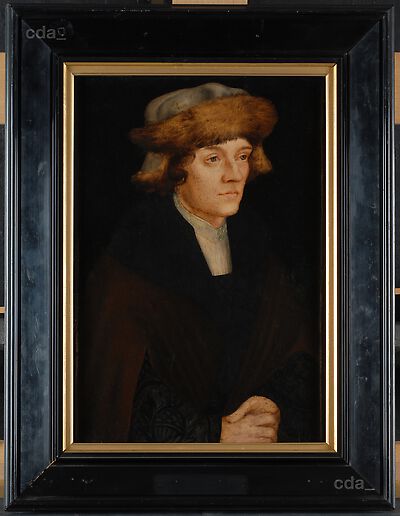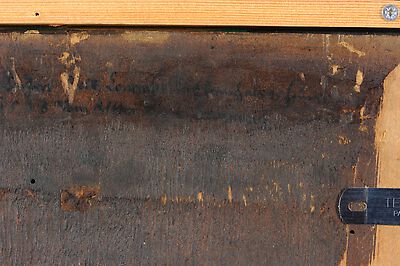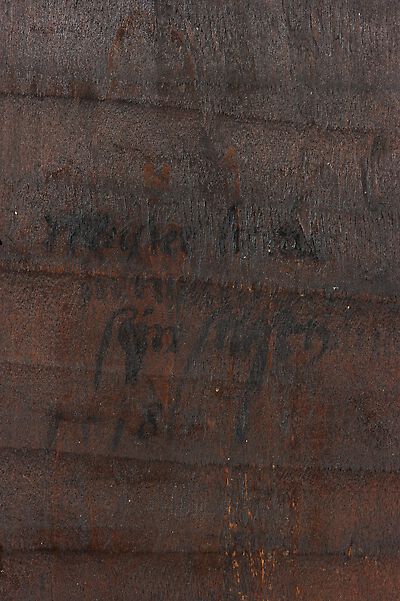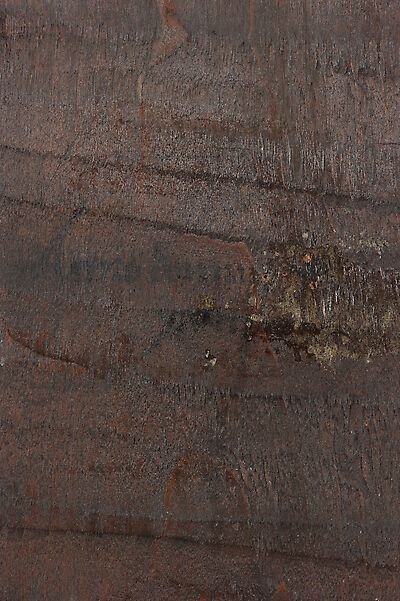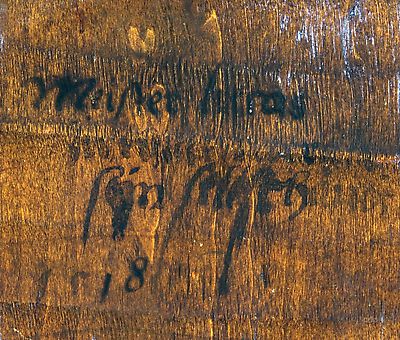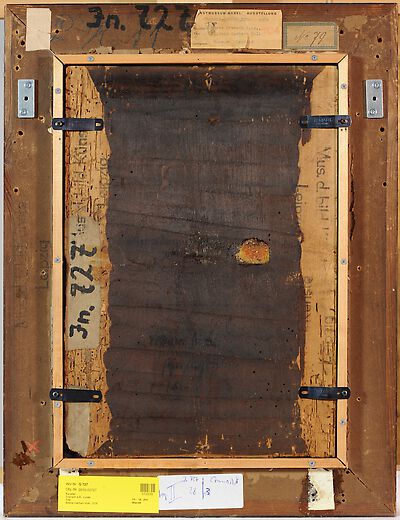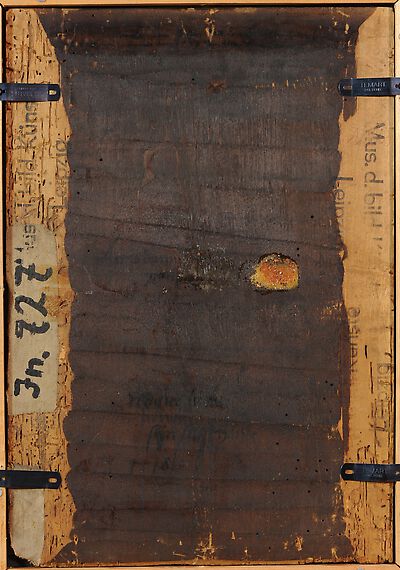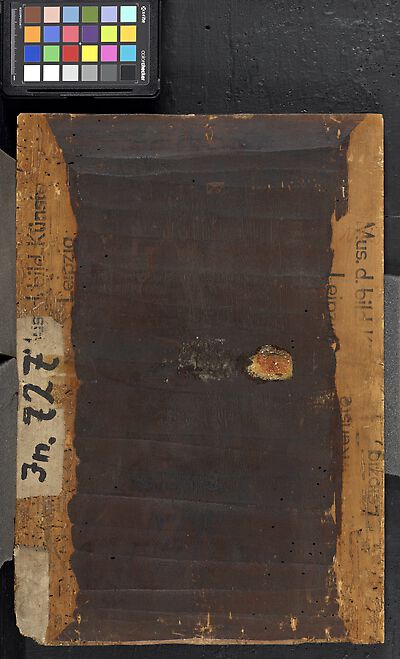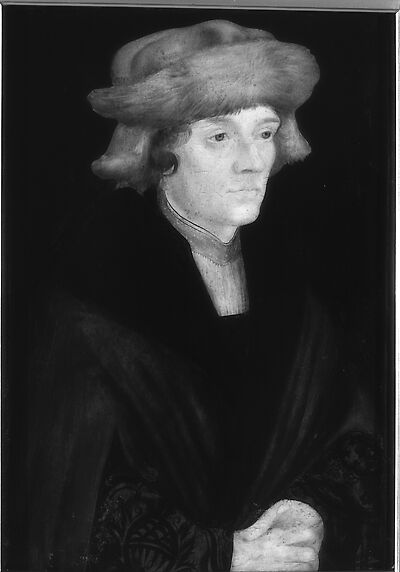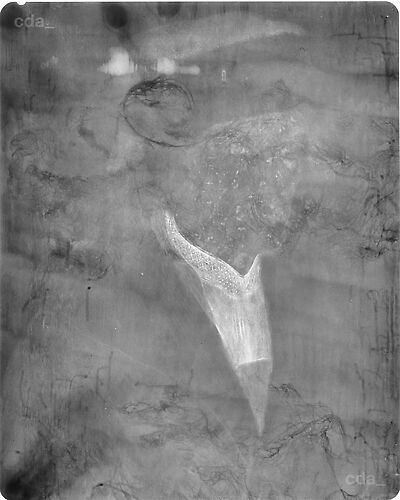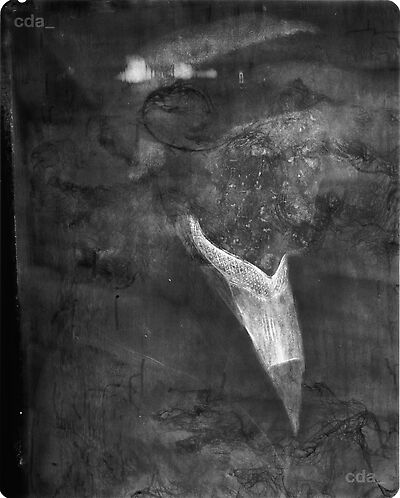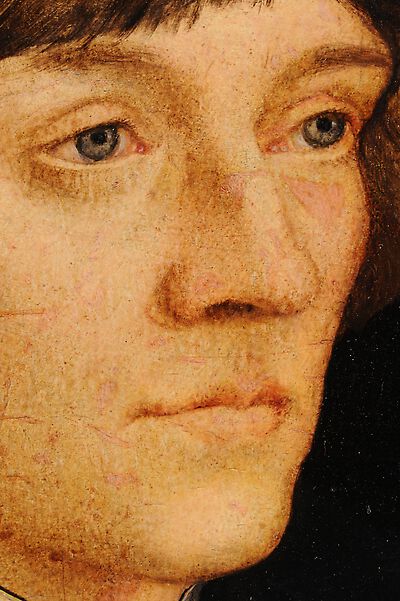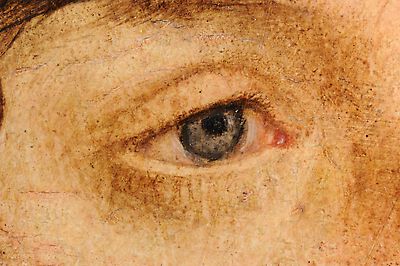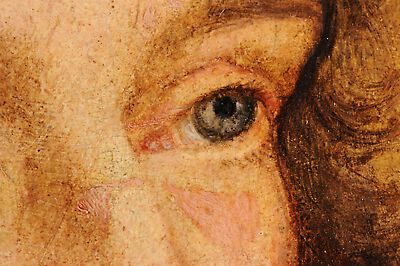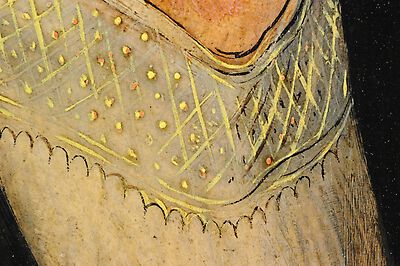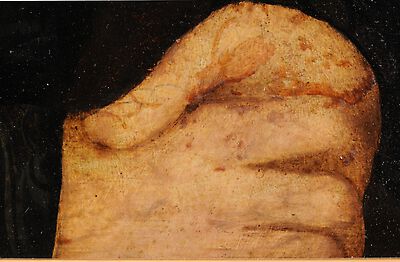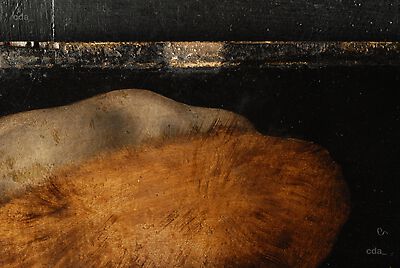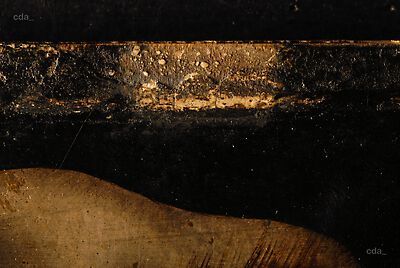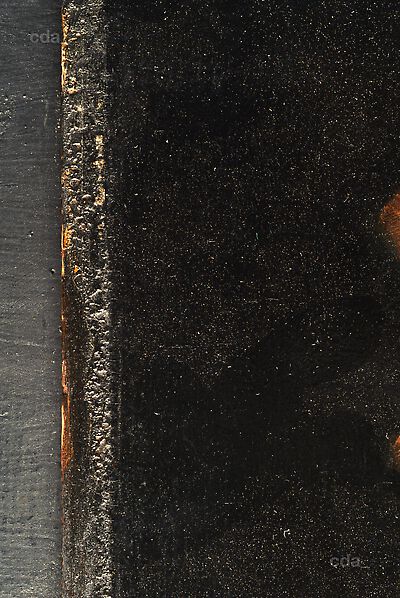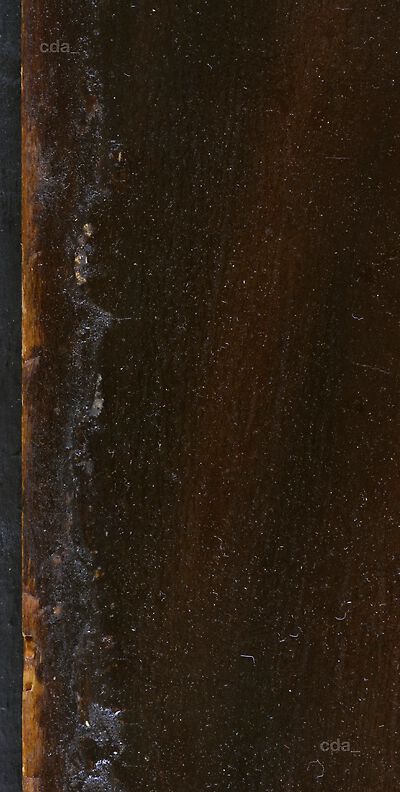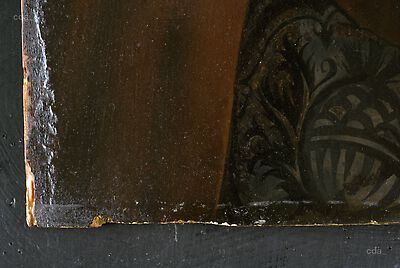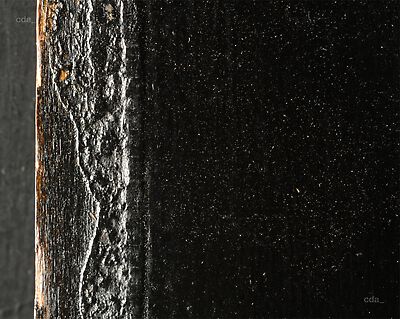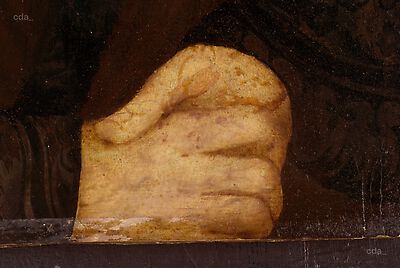Support
- lime wood. Previous assertions that the support is parchmentt attached to a wooden panel could not be confirmed after examination under the stereomicroscope.
- a single plank, no knots, tangential cut
- width: 28.2/28.4 cm
- vertical split-marks, horizontal marks from a blockplane
- the joins were not reinforced
- the edges of the panel are straight and there is no sign of a rebate
- the bottom edge was trimmed at a later stage (not original)
Ground and Imprimatura
- white ground, probably chalk/glue (not tested)
- relatively thick
- the painting was probably fitted in a working frame when the ground was applied and during the painting process. Along three sides of the panel (except at the bottom) the ground exhibits irregular, garland-shaped shrinkage with bubbles, see photograph.
- along three sides, except at the bottom, straight lines are incised in the chalk ground, indicating the format of the painted image.
- fine, crisscross sanding marks are visible under the stereomicroscope (only beneath the lighter areas of paint like the flesh paint, the hat and the shirt)
- no imprimatura
Underdrawing
- no or very economical underdrawing, only a few lines in the area of the hands and one line at the right of the forehead (above the eye). Stylus or chalk
- visible under the stereomicroscope on the thumb at the edge of the cuff
- some deviation
Paint Layers and Gilding
- grey, semi-opaque underpaint beneath the garments (sleeve) semi-opaque brown tone for the fur and hair
- relatively simply layer structure, limited palette. face, hands, shirt and hat are outlined by the opaque paint of the background and the coat. Semi-opaque paint layers were applied over the the light ground and blended wet-in-wet to create light and shadow. The deep shadows were initially executed economically witha thin admixture of blackish-brown paint and softly blended to create the half-shadows. After drying the semi-opaque flesh tones were applied and in part scumbled over the shadows. Contours and highlights were applied wet-in-wet. The coat was underpainted in grey and brown and the folds were modelled wet-in-wet in a darker tone. The pomegranate motif was applied after the paint had dried.
- brushed, glazed, selectively highlighted
- small sized brushes
Framing
- not original, 19th century
- dimensions: 53.5 x 41 x 4 cm (including addition: 5 cm)
- coniferous wood, plaster, black shellac, gold
- mitred, chamfered engaged frame, black shellac with a gold inner edge and a matt gilded inlay
[Museum der bildenden Künste, 11.06.2014]

